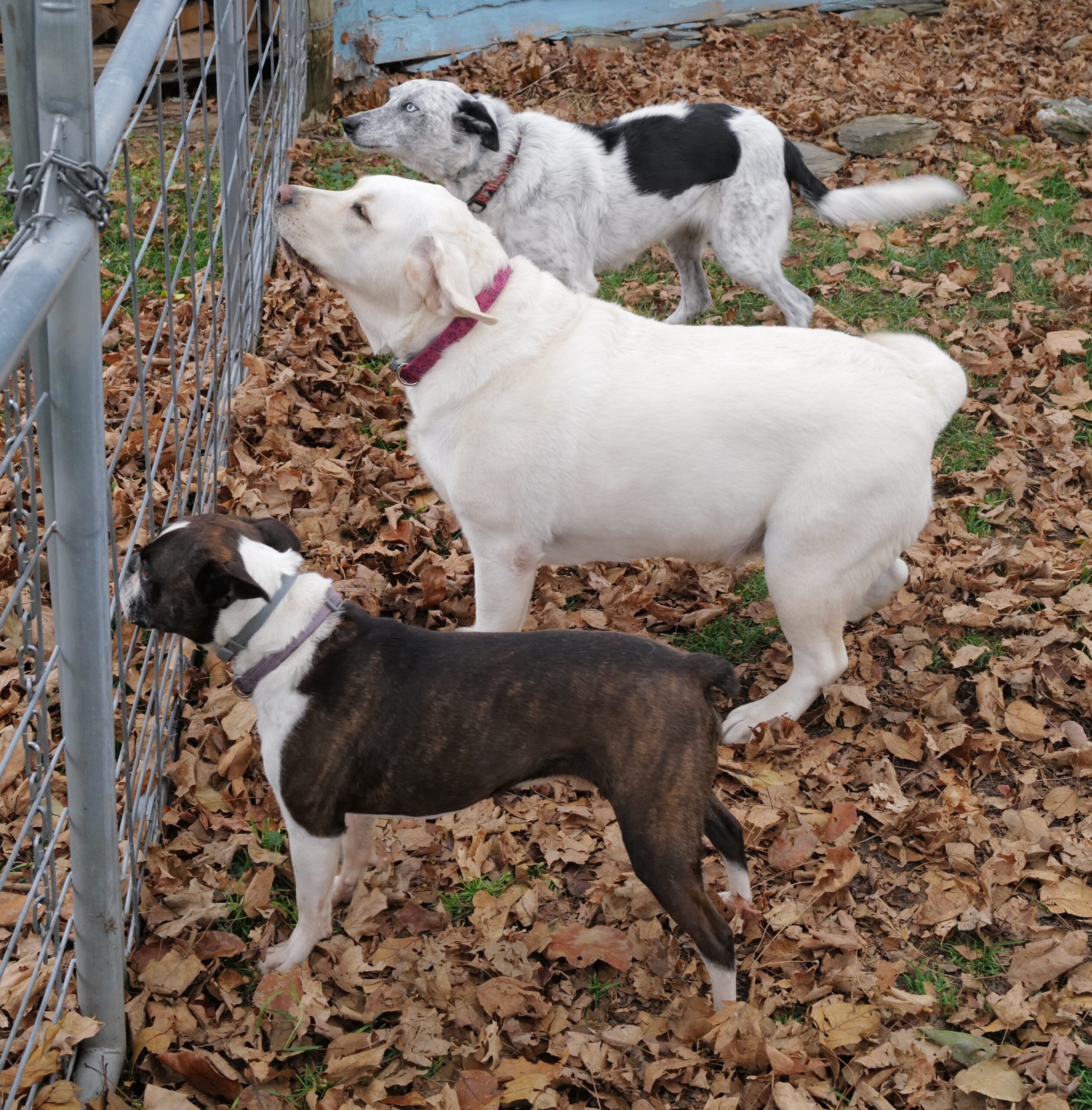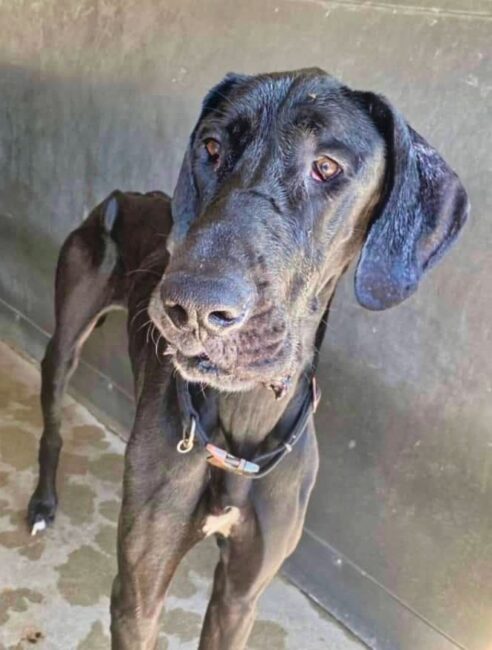The Germans called it weltanschauung, which means to have a conception or view of the world. For some years, trainers have applied it to dogs and dog training. Dogs are believed to form their opinion of the world between 18 and 14 weeks. I think understanding this is an essential part of understanding and training dogs.
This is when they make their first decisions about people, dogs, strangers, aggression, security, food, play, and attention. It is a critical time for puppy training.
People with older dogs – most know little about weltanschauung – struggle to change the traditions, habits, and worldviews of their dogs. Rescue dogs, in particular, are sometimes challenging because we often know little about what happened to them. We have learned this the hard way with Bud.
Growing up with a puppy is different.
Rescue dogs form their conceptions of life – often sad and frightening – away from us and out of sight. We can’t know what happened to them.
Changing an older dog’s worldview is possible but takes time, patience, and trust.
This morning, I worked with a loving and conscientious dog owner who has a four-year-old dog from a breeder who has stipulated that the dog that can go home with her must be returned to her for one more breeding.
The dog spent almost all her four years in a clean and comfortable breeder’s kennel and is seeing the outside world and her new home for the first time. Interesting, challenging issues crop up. The dog didn’t know each much about anything for the first four days, and she became concerned and contacted me.
We have been meeting on Zoom. She intends to train the dog for therapy work. I can help with that.
The breeder left food out in a bowl all day, and her dogs would take small amounts from time to time when hungry. They were never given large bowls of food.
The new owner was concerned because the dog only ate small amounts at a time. This didn’t worry me – healthy, well-bred dogs don’t starve when there is food nearby to eat, and they can take as much time as they want since there are no other dogs in the house.
In the dog’s world view, there was always food around.
She never learned or needed to scarf it down as most dogs do when they live with siblings or other dogs, and her new owner was beginning to think she was doing something wrong and harming the dogs. In her human family, the children were all urged and expected to eat a lot of food and gulp it down.
Her mother was in her head.
This idea carried over to her, and she felt guilty about her new dog’s eating habits.
We had several good talks about this. I told her she was transferring her experience with good onto the dog. It’s a new dog, so she was understandably anxious about leaving her home of four years and entering a new one. We agreed to leave her mother out of it and let the dog figure things out on her own.
This is a great life for a dog, woods to run in, people home all day, lots of loving care, excellent food, and attention. I urged her to give her and the dog more credit. The dog is happy to be crated, come out, and walk outside, sleep all night. He will be fine.
New dogs are often anxious and often eat little food for a while.
The idea is to remove anxiety from their lives, not create it by pushing against their worldview and pressing eating habits on them that are not natural, not part of their weltanschauung. A key to acclimating new dogs is to reduce sources of stress on them, especially initially.
We did good work together.
I urged her to “chill” and let the dog figure her new worldview out. For her, everything was suddenly different. Let her come to it, and don’t pressure her. Let her set her timetable for acclimation. Offer love, praise, and encouragement.
The dog is calming down, and so is she. You can’t train a dog without knowing yourself and understanding your own emotions. It is very often about us, not them. We can see them more clearly than we see ourselves.
Over time, this dog’s weltanschauung will change. In a month, she will have transitioned to her new life. The calmer and more focused her human becomes, the happier the dog. It was a good and fruitful exchange and contact; she says it has dramatically helped her.
She can see the results already. This feels good.
___
My second case today is the most complex and challenging yet.
A terrified and emaciated Great Dane was taken in by an experienced and committed person who has rescued dogs for years and understands them as well as anyone I’ve met or spoken with. This is a fortunate dog to have landed in her hands. She will never quit on her.
It is a pleasure to be working with this person.
The dog is terrified at the sight of people, curls up in a corner, and refuses to move if she sees anyone new. Initially, her rescue could not get near her. She is gentle and not in any way aggressive to people or dogs. On a new diet, she has fleshed out with a beautiful coat (I’m getting a photograph).
She lets her human sit with her, pets her, and talk to her, but she won’t leave the kennel or eat if any people are around. She just goes limp if a leash is put on her. Something about people has terrified her. We’ve ruled out health problems.
We both agreed tonight to take the long view. P has already improved somewhat and slowly. She moves in her kennel a bit, looks out at the other dogs, and tolerates them when they are let in her kennel.
Her human is installing a taller fence so she can leave P’s kennel gate open (without fear of jumping away).
P is more alert and calmer, no longer bony. But her issue with people is the most intense either of us has seen.
We agreed today to take the long view—no medication, for now, lots of patience. So far, a lot of improvement in every area, but not freaking out at the sight of people. Two young women are helping my client, working to acclimate her, touch her, and brush her. She has accepted them.
I am so impressed with this woman and her dedication to this dog. She tells me she is in it for the long haul, and so am I. We work very well together and talk at least once a week.
I’m very hopeful about P. The vet says she is healthy and about two years old.
So far, this is the most complex issue I’ve run across in my new and quite exciting Dog Support Program. And a heartbreaker, such a beautiful young dog, traumatized so severely. But she is in good hands, finally. And I love the challenge. I know we will figure it out if we are patient and creative.
So far, I’ve handled 15 or 20 issues and installed software beneath each blog post to make it easy for people to contact me. That will happen next week. I charge $50 a half hour, but we work things out cheaply in long-term cases like P. I won’t abandon any dog or person I agree to help.
I schedule sessions on Monday, Wednesday, and Friday at 5 p.m. Eastern Standard Time.
We are trying different things with P, brainstorming, researching, and experimenting. We are trading ideas, brainstorming, and getting there; I sense this dog will need months to heel.
This work has become a calling for me. I could not work with a better person or a needier dog with P. If you wish some Dog Support, e-mail me at [email protected]
I’ll do my best to help.



My heart has been with this dog and it’s owner from your very first post about it. I trust this will not be easy all around…..but the caring and dedicated owner, and your help, will hopefully help this dog to be able to trust again oneday…….and to accept the love that it so deserves. I trust it will be a long and gentle process…………. on a larger, but similar scale as what you and Bud have been through together. I send only love to all involved……….
Susan M
My son and I fostered two very shut down dogs. After some research I started just sitting in a run with one of them for maybe
A half hour at a time reading a book, sometimes out loud. These dogs would not come near me by choice. They were not aggressive just scared of people. Every so often I’d toss a piece of kibble or chicken my body was always sideways to the dog and I did not look at them. I’d gradually toss the treat closer to me. After Weeks, they’d volunteer to come closer and closer and eventually take a treat from my hand. A slow process but very rewarding when they finally went to their forever homes. Patience will reward in the end. I know this woman will prevail.
So good to hear this story of this traumatized dog and how she is being bought back to being a happier dog. People who inflict this kind of abuse on a dog are probably doing it to everyone around them and they need rescuing too. A dog could have saved them but instead their needs were manifested in abuse the dog.
I will be waiting to see how P comes to being a happy dog. She has a lot of good dog people in her corner.
Not so much for the abuser. Sigh.
D
Regarding the first case…..I so relate! It’s crazy how when you explain this seemingly simple process it all makes sense. So helpful. Thx for sharing the stories. Helps me to remember to stay on track. Awesome stuff!